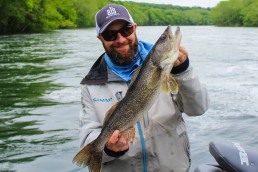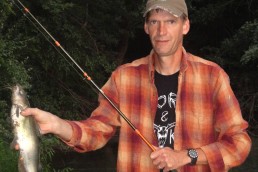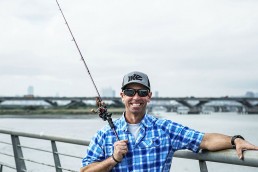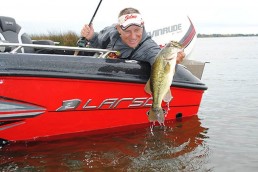Anglers Keep our Heritage Alive and Well
SHARE THIS POST
Fishing is so much more than catching a stringer of fish for the night’s dinner. Anglers and boaters help protect our aquatic natural places and the wildlife that lives there through fishing licenses, boat registrations, fishing gear, boat fuel sales and much more.
Purchasing fishing accessories also goes to help conservation efforts that ultimately ensure good fishing. In 1950, the U.S. government passed the Federal Aid in Sport Fish Restoration Act (FASFRA). This voluntary agreement between the state and federal governments encourages states to protect endangered fish species and allows states to levy extra taxes on fishing gear like fish finders, poles, tackle and boat fuel. The money goes to the federal government, which it uses to compensate up to 75 percent of costs borne by the states for fish conservation and management programs.
At one time it was the norm to catch a limit of fish, fillet them and cook them for a meal. That is still fine today, to some extent, but anglers are learning the importance of catch and release practices. It is because of this practice that fish populations and trophy fish are at all-time highs.
You can only release so many fish, though, before you decide to save a couple. Just remember to not overdo it and keep more than you need. After all, who doesn’t like a good meal in a fresh cooked fish and the nutritional values it provides.
Many in the health profession recommend fish as a lean protein alternative to red meat. For example, a serving of pink salmon contains only about 127 calories, 4 grams of fat and 57 milligrams of cholesterol. Most types of fish contain about 20 to 25 grams of protein and 0.33 milligrams of iron per serving. Fish also contains omega-3 fatty acids, which support brain and neural development.
There is a saying: “A bad day of fishing is better than a good day at work.” This is why so many people go fishing. Whether you are catching fish or not, it is a relaxing way to spend time with family and friends.
For many people, lifelong memories have been made on the bank of a farm pond or on the deck of a boat 50 miles offshore. Whether it is watching your child catch his or her first fish, or fighting a marlin off the coast of Hawaii, fishing provides plenty of opportunities to build relationships, share experiences and enjoy the outdoors.
Are you enjoying this post?
You can be among the first to get the latest info on where to go, what to use and how to use it!
Freshwater fishing is comprised of everything from panfish, bass, walleyes, catfish, muskies and more. Many of us began fishing for freshwater fish with a hook and bobber. There is nothing wrong with that, and we still practice that here at FieldPost.
Over the years, the desire to land trophy fish has pushed anglers to fish primarily for bass, walleyes, muskies, salmon and even giant catfish. If you do catch that trophy fish that has been eluding you, remember to practice catch and release. A photo is worth a thousand words. And if you are looking to put the fish on the wall, a reproduction mount is just as good as a traditional mount. Many times, even better.
Whether you are looking to catch a mess of crappies for dinner, or that 10-pound largemouth, freshwater fishing has something for everyone.
With so many fishing opportunities, it is a good idea to get someone new involved in the sport, or reacquaint an angler that has been away from the sport for awhile. That is where the National R3 program plays a vital role in keeping our outdoor heritage alive and strong, through recruiting, retaining and reactivating outdoor enthusiasts.
“Fishing is much more than fish. It is the great occasion when we may return to the fine simplicity of our forefathers.”
~Herbert Hoover
MWO
SHARE THIS POST
Did you enjoy this post?
You can be among the first to get the latest info on where to go, what to use and how to use it!
Jason Houser
Jason Houser is an avid outdoorsman from Central Illinois. Houser has been a full-time freelance writer since 2008. He is also the host of Jason Houser Outdoors, airing on the Hunt Channel. He can be found on Facebook at Jason Houser Outdoors or on the web at jasonhouseroutdoors.com.



